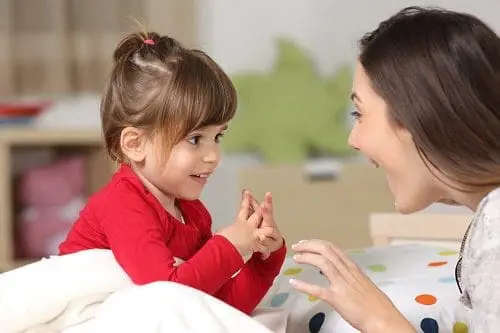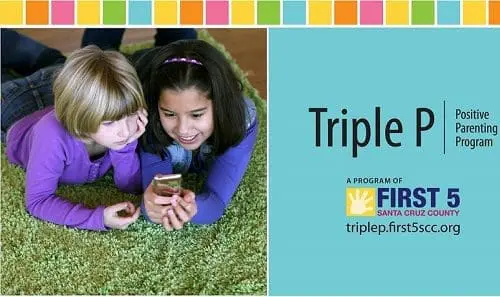Nicole M. Young, MSW
I loved celebrating Valentine’s Day as a child. My favorite memory is of the Valentine’s “mailbox” that appeared every February. It was a big box that my mom decorated with colorful paper, hearts, and lace, with a large slot in the lid. My siblings and I loved “mailing” our cards to each other and trying to guess what was inside the box. Even though we knew it contained cards and candy, the anticipation and curiosity made the Valentine’s celebration — and us — feel special.
Before I had kids, I vowed to create a Valentine’s mailbox and holiday rituals that would make my own kids feel that special. However, once I became an exhausted parent, the best I could do was cover a shoebox with a few stickers. It was a simple version of my childhood Valentine’s mailbox, but somehow my young children still felt the same anticipation, excitement, and joy as they imagined what was inside the box. It was a good reminder that when it comes to love, the simplest acts often have the greatest impact.
Dear Nicole, I can barely think straight after the chaos of the holidays and the recent storms. But my kids (5, 8) have become obsessed with what they’re getting for Valentine’s Day. They’re asking for toys and video games, which seems extreme. How can I teach my kids that we can show love without giving big gifts? This tired dad could use some creative ideas. Arturo
Dear Arturo, Great question – I’m sure many other tired parents would welcome some ideas, too! So many holidays feel like a giant commercial for cards, candy, flowers and toys. It’s easy to forget the true purpose of many holidays, like giving thanks, celebrating miracles, or showing love. Here are some ideas for simple ways to teach your kids about giving and receiving love any day of the year:
Say “I love you” with words, notes, pictures, or texts. Parents and children often forget to say these words, or they say them out of habit, without genuine feeling. A simple, heartfelt “I love you” is a powerful way to remind each other that you care. If your kids aren’t used to saying these words to you or each other, try turning it into a game or competition to see who can find the most creative or surprising way to leave a loving note, picture, or text.
Do an activity together without distractions or interruptions. Take turns picking an activity, starting with one of your kids. Turn off phones, tablets, and other devices that create distractions and interruptions. Make an agreement that everyone will participate with enthusiasm, even if it’s not an activity each of you would choose to do on your own. This encourages children to learn how to compromise, take turns, and consider other people’s feelings and interests — all of which are simple acts of love.
Have dinner together. Research shows that having regular family dinners has tremendous benefits for children and youth, including better academic performance, higher self-esteem, and lower risk of substance abuse and depression. Family meals provide an important opportunity to talk with children about their interests, friends, school, and life. Start a conversation about a topic that has nothing to do with homework, chores, family rules, or daily routines. Ask questions, listen to what they say, and encourage them to ask you questions. This teaches valuable communication and social skills that will help your children in future relationships.
Say what you appreciate about each other. Be specific and sincere. Describe a quality that makes each of them special, such as their sense of humor, their creativity, or a hobby or skill they are good at. Thank them when they do something caring and helpful, like asking you how your day was or doing a chore with a cheerful attitude. This shows them you notice their efforts. Set the example of how to express appreciation, then encourage them to do the same with you and each other. Over time, expressing appreciation will become a habit.
 FINAL THOUGHTS: There are many ways to teach children about giving and receiving love, not only on Valentine’s Day, but every day of the year. The simple acts of love often mean the most and create the happiest family memories.
FINAL THOUGHTS: There are many ways to teach children about giving and receiving love, not only on Valentine’s Day, but every day of the year. The simple acts of love often mean the most and create the happiest family memories.
This monthly column provides tips for anyone who is helping raise children, based on the world-renowned Triple P – Positive Parenting Program, available to families in Santa Cruz County. If you have a question or idea for a future column, email me at triplep@first5scc.org.
Nicole Young is the mother of two children, ages 19 and 22, who also manages Santa Cruz County’s Triple P – Positive Parenting Program, the world’s leading positive parenting program. Scientifically proven, Triple P is made available locally by First 5 Santa Cruz County, the Santa Cruz County Health Services Agency (Mental Health Services Act) and the Santa Cruz County Human Services Department. To find a Triple P parenting class or practitioner, visit http://triplep.first5scc.org, http://www.facebook.com/triplepscc, or contact First 5 Santa Cruz County at 465-2217 or triplep@first5scc.org.





